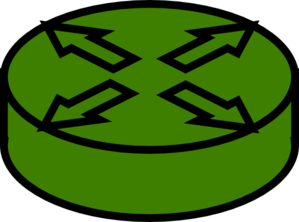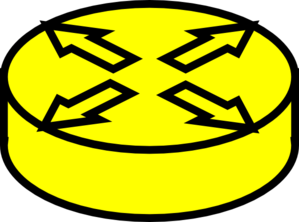Exercise #5 CBT nuggets, CCNP Route
For then latest CCNP route article go to https://ccnp300-101.blogspot.com
For then latest CCNP route article go to https://ccnp300-101.blogspot.com
Paragraph
#1

Start , enable, conf t
IP asignation to each interface on R1
interface Loopback2ip address 172.30.2.1 255.255.255.0
interface Loopback3
ip address 172.30.3.1 255.255.255.0
interface Loopback4
ip address 172.30.4.1 255.255.255.0
interface Loopback5
ip address 172.30.5.1 255.255.255.0
interface Loopback6
ip address 172.30.6.1 255.255.255.0
interface Loopback7
ip address 172.30.7.1 255.255.255.0
interface Loopback8
ip address 172.30.8.1 255.255.255.0
interface Loopback0
ip address 172.30.0.1 255.255.255.0
interface Loopback1
ip address 172.30.1.1 255.255.255.0
Interface Serial0/0
Description Connection al R2
Bandwidth 128
Ip address 10.1.24.1 255.255.255.252 ( el “252” viene del subneting del /30)
No shut
Interface Serial0/1
Description Connection al R3
Bandwidth 256
Ip address 10.1.34.1 255.255.255.252 ( el “252” viene del subneting del /30)
No shut
Exit, exit
Verificacion de IP y coneccion de interface R1
Show ip interface
brief ( parte 7:00 del video)Bb#conf t
BB(config)#router eigrp 90
BB(config-router) #network 172.30.0.0 0.0.255.255
No auto ( para que no halla auto-summary)
( explicacion: 172.30.0.0 es class B, y o.o.255.255 es el subnet mask…lo que estamos hacienda son 2 cosas: A)sending hellos a los ultimos 255.255 pues que sean cualquiera.. no nos importa..
B)Advertising to R2 y R3
We need to enable our
SERIAL interfaces in R1
#BB(config-router)# crtl
y “z”#BB (config-router)#network 10.1.0.0 0.0.255.255
#BB (config-router)# network 192.168.1.0 ( no mencionado hasta el min. 20
No auto-summary
Ip default-network 192.168.1.0 ( to connect statically)
Ip route 192.168.1.0 255.255.255.0 null0
End
# show ip protocols
(Vemos que hay eigrp 90, y que esta routing estos networks: 10.1.0.0/16 y el default network 172.30.0.0 que no tiene /16)
________________________________________________________________________________
Configuracion del R2
Asignacion de IP a los
interface
Enable Conf t, Hostname
Interface Serial0/0
Description Coneccion al BB
Bandwidth 128
Ip address 10.1.24.2 255.255.255.252
No shut
Interface f0/1
Description Conneccion al Switch1
Ip address 10.1.2.2 255.255.255.0
No shut
No auto-summary (Nota: leer bien en la consola como esta escrito f 1/0, f 0/0, f 0/1)
Interface FastEthernet0/0
Description Conneccion al Switch2
Ip address 10.1.25.2 255.255.255.0
No shut
(Nota : 1.- ir al cuadrito de show interfaces en GNS3 que parece una paleta
2.- despues vamos a darle un enable de eigrp)
R2#conf t
R2(config) #router eigrp 90
R2((config-router)#do show run int fa0/0 (para ver cual es el IP especifico del fa0/0)
network 10.1.2.2 0.0.0.0
network 10.1.24.2 0.0.0.0
network 10.1.25.2 0.0.0.0
no auto ( para que
no halla auto-summary, se aplica no a los IP
no a los network)
end
ctrl Z
#Show ip eigrp neighbors ` ( par aver la situacion de la conneccion, hasta ahora solo BB)
Explicacion de terminos
de show IP eigrp neighbors
H Handle: The order that you have neighbors: 0 is the
first neighborHoldtime: The order when you consider your neighbor dead ( never below 10 secs because it would mean you missing hellos
SRTT : source round trip timer ( hopw long does it take to get it the re and back in MS
RTO : Retrasmited time out
Q: How many packets are in queued waiting to be send, if there is anything above 0, means the is a problem with the bandwidth, , or a link problem
Seq Number : La version de la base de dato que esta corriendo
Configuracion
del R3
Enable, conf t y hostname R3Interface s0/0
Description coneccion al BB
Bandwidth 256
Ip address 10.1.34.2 255.255.255.252
No shut
Interface f0/0
Description Coneccion al SW1
Ip address 10.1.2.3 255.255.255.0
No shut
Router eigrp 90
Network 10.1.2.3 0.0.0.0
Network 10.1.34.2 0.0.0.0
No auto-summary
End
#do show ip int brief
#show ip eigrp neighbors
#show ip route
BB#show ip routes
We can see that if connects to SW2 (10.1.25.0 and 10.1.2.0 using 10.1.34.0 because is the fastest bandwidth connection)
An important command: BB#show ip eigrp topology (17:49:mins.)
-It will show one successor : the less FD ( feasible distance) : 10.1.34.2
-It will show the slower :
feasible successor, the back up
Second
Paragraph
We verify the information’s
in show IP routes in r2 if it’s
receiving the static route of 192.168.1.0 of BB
The second paragraph explain the ip default-network for
192.168.1.0, , when it’s marked in BB
with “*” means that it’s the candidate for statid route , but when you go to
R2 it’s the designated static route.You
can see that in #show ip routes
Third
Paragraph
On R2 we need to id the interface, so we don’t want to say hello but
advertise to other neighbors:#show ip int brief ( we see it’s 10.1.25.2 = f0/1)
#router eigrp 90
#passive-interface default
No passive-interface s0/0
No passive-interface s0/1
No auto-summary
End
We confirm at “section” eigrp
: r2#show run | s eigrp
Paragraph
4
From 0 till 7 are 8
numbers..16 ( 15 numbers would be too much) 4 3 numbers would be too small
From 8 we go to 128,64,32,16, 8, 4,2 ,1…the 8 number would be the fifth in that order 128,192,224,240,248… it means 248
A.-in BB#router eigrp 90
BB#int s0/0
BB#(configif)#ip summary-address eigrp 90 172.30.0.0 255.255.248.0
B.-Now go to R2
R2(config-router)#do show ip route
It’s different because it got ( /21) , that mean 8+8+5.. Belove it’s where he is learning the route 10.1.2.0, it says serial and got the double of F.D.
C.-We found out that we need to configure in BOTH SERIAL interfaces of BB
BB(config-if)#int s0/1
BB(config-if)#ip)#ip summary-address eigrp 90 172.30.0.0 255.255.248.0
D.-Them we go to R2 and check on R2#show IP route and them R3
Paragraph 5
In BB#show ip eigrp topology We see that 10.1.34.2 is faster that 10.1.24.2
BB#(config)router eigrp 90
BB( config-router)variance2
Crtl –z
BB#show IP eigrp topoly
Now you will see two path using A.S. 90 to 10.1.2.0

















